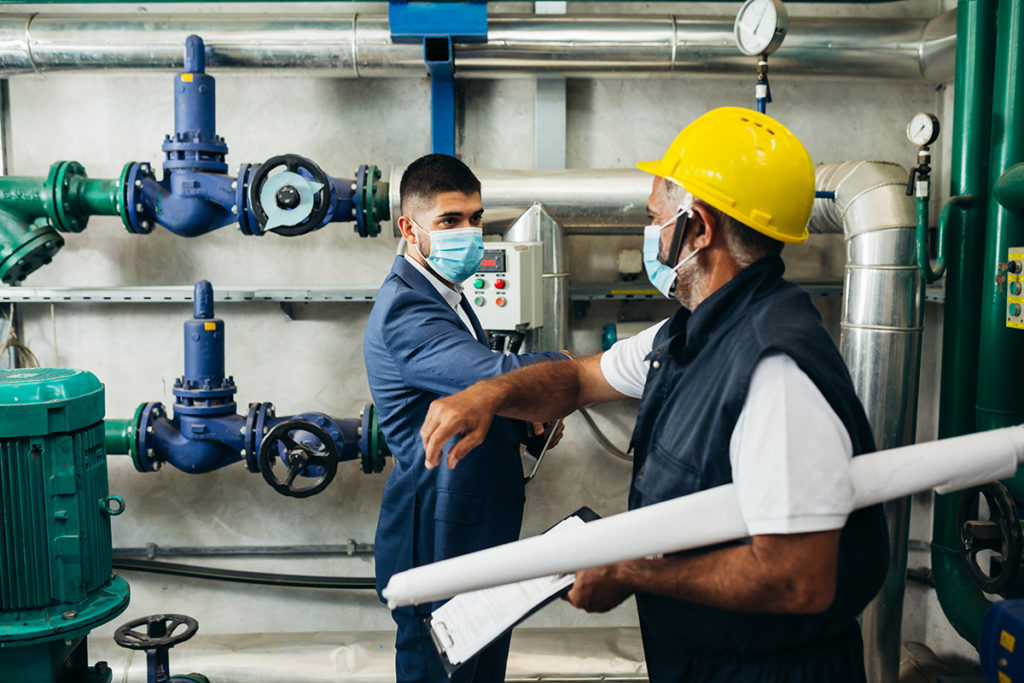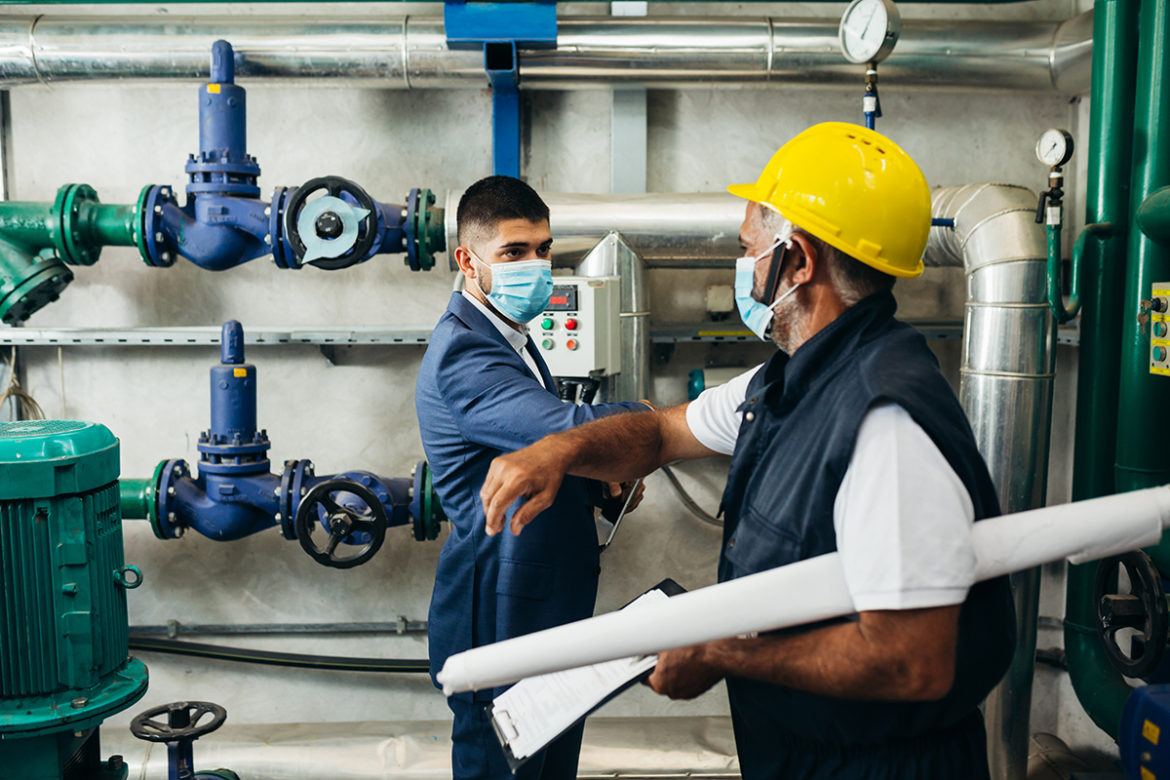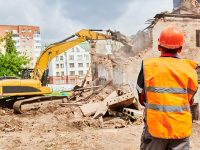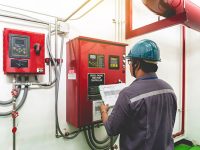Introduction
As a person conducting a business or undertaking (PCBU), you have the responsibility to ensure that safety is at the forefront of your business. A well-established and implemented work safety practice will not only protect your workers but will help you save unnecessary costs associated with workplace injuries or illnesses.
But what are the safe work practices you should implement? Following are the ten best safety practices that you can apply for a healthier and safer workplace.

Ten Best Practices for a Safer Workplace
-
Good Management Leadership
Everything starts with the leader, which means it involves you, the business owner, managers, and supervisors. The top management may not be the one doing the work directly, but future directives and support in the aspects of health and safety are steered by the management.
-
-
Set a safety vision
-
In defining your goals for the organization, be sensitive to the safety and health of the worker. Together with your team, craft a broad inspiring vision with regards to work safety. Once this is set, all your specific goals will flow from it.
-
-
Communicate the vision
-
Achieving the safety vision is a collective, effort which means that all constituents in the organizations are involved. When the vision is imparted clearly to your workers, they will not just understand it but exert more effort to apply it in their tasks.
-
-
Lead by example
-
Leading by example will create an imprint in the workers’ minds of what’s possible. Doing it will make it easy for others to follow.
-
Risk Management
Risk management is the process of identifying hazards that could potentially harm the workers, the likelihood and severity of injury or illness, the wise implementation of control measures to mitigate these hazards, and regular assessment of these measures.
An effective risk management system will not only protect workers but will save you a good deal of money. Risk assessments produce cost benefits by reducing the likelihood of an accident and reducing fines and penalties due to non-compliance.
-
Proper Training and Education
Education and training are vital tools to provide a greater understanding of health and safety programs for both workers and management. With this endeavor, the organization will be made aware of the specific knowledge and skills required to carry out a task safely and avoid hazards.
With a good training program, your company can reap the following benefits:
-
-
Increased workers’ focus and morale
-
Increased job satisfaction and productivity among employees
-
Improved process efficiency, consequently enhancing financial gain
-
Enhance company image
-
-
Applying Ergonomics
Integrating ergonomics in your operations will help prevent musculoskeletal injuries and increase productivity. Check all activities related to the conduct of your business and identify ergonomic hazards. Once you have identified them, reduce them by applying engineering and administrative controls to prevent any injury.
The primary ergonomic risk factors are as follows:
-
-
Forceful exertions
-
Some tasks require heavy use of force that could increase fatigue and lead to musculoskeletal disorders (MSD).
-
-
Highly repetitive tasks
-
Due to the nature of the task, some activities are repeated frequently. If you combine it with other risk factors like high force and awkward posture, it could develop into MSD.
-
-
Prolonged awkward postures
-
Awkward postures create an unnecessary force on the joints and muscles. When body joints are not close to the mid-range movement, the possibility of having MSD increases.
After having considered the risk factors above, do an assessment of the processes or equipment that need to be ergonomically improved to enhance safety in the workplace.

-
Using Mechanical Aids
Carrying heavy loads more than the human body’s capacity places fatigue and creates a risk of a falling object. Mechanical aids will help your workers to easily move and transport heavy materials without creating a physical strain on their bodies.
Below are examples of mechanical aids you can use, if applicable:
-
-
Hand truck
-
Cart
-
Book truck
-
Pallet jack
-
Pneumatic lift
-
Conveyor
-
-
Personal Protective Equipment (PPE)
Investing in PPE is a wise decision for your business, especially if the conduct of it involves exposing the workers to hazardous activities or materials. The PPE will protect the worker against safety or health risks associated with performing the task.
-
-
Head Protection
-
Hard hats are commonly used, especially for the construction industry, but it is still highly useful in large manufacturing plants and warehouses. They protect the workers from flying and falling objects that might impact the worker’s head.
-
-
Eye and Face Protection
-
For protecting the eyes and face, you could use safety goggles or full-face shields. For the metal, wood, and other related manufacturing industries, this type of protection is extremely needed.
-
-
Respiratory Protection
-
If toxic substances like fumes, dust, and pesticides are involved in your business, respiratory protection is a must.
-
-
Hand & Skin Protection
-
Skin injuries and infections are one of the most common WHS-related issues and are very costly. Examples of hand PPE’s are cut-resistant gloves, rubber gloves, and heat-resistance gloves.
-
-
Hearing Protection
-
Because it isn’t visible to the naked eye, noise hazards are often neglected. if your business involves noise that reach harmful levels, make sure to provide workers with hearing protection tools like earplugs and earmuffs.
-
Open Communication
Again, achieving the safety vision is not just a one-man job but it is the responsibility of all, including the workers. In running your business, make sure to appoint health and safety representatives and committees as they are important in improving the conditions of the job.
The committee will provide a forum for the workers and management to cohesively work together in solving health safety concerns. They will help your company in identifying hazards, information drive, and incident Investigation
-
Reduce Workplace Stress
The operations itself may not be stressful but the worker’s reaction to a situation could be. The stress arises in the workplace when the worker is overwhelmed by the job demands due to the limited amount of control in achieving those demands. Stress can come from different situations or in one single event. Regardless, the impact of the worker’s stress will have a domino effect on the whole organisation.
Job Design
Job design is a key factor in reducing workplace stress. The guidelines below will help reduce stress in the workplace:
-
-
The job must be reasonably demanding.
-
The worker must be given time to learn the job.
-
The job must allow the worker to have a level of decision-making.
-
Other Means to Reduce Stress
-
-
Provide fair and unbiased treatment for all workers.
-
Take time to listen to workers.
-
Be sensitive to workers who have difficulty in coping with stress.
-
Provide health and wellness programs in the workplace.
-
Ensure that proper training and education is provided.
-
-
Regular Audit and Review
While some business owners and managers get wary about an audit, you should trust its purpose. The main objective of the audit is to check if your health and safety management systems are aligned with the standards, and if they are operating effectively.
You can do internal audits, and you can also tap an external auditor. The more objective the audit is, the better. Through an audit, you can identify safety program elements in your business that need improvement.
-
Emergency Plan
Having an emergency plan is important in dealing with major emergencies. Aside from providing specific systems and procedures during emergencies, you and your team could uncover potential hazards that may arise and how you could eliminate them.
Conclusion
Implementing a safe workplace is a challenging life-long mission. You don’t stop with just one safety program, and that’s it. You need to keep reviewing and assessing if the controls are effective and what needs to be improved. Being the leader, you need to take the lead because safety starts with you.





